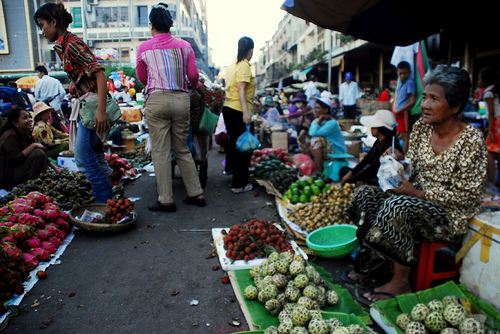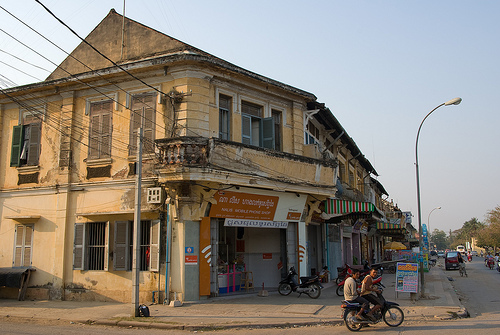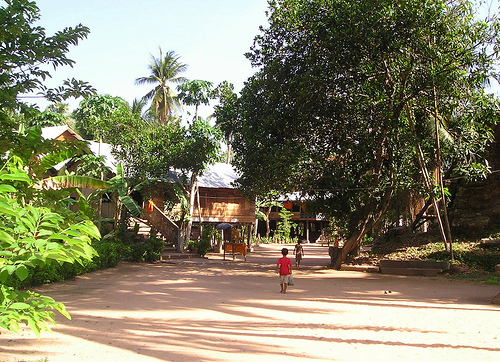Navigating the Cities of Cambodia

Phnom Penh
Phnom Penh is Cambodia’s capital, as well as its largest city, with about 2 million residents. Along with being the country’s political, industrial, cultural, tourist and economic center, it is also the richest city in Cambodia.
Geographically, Phnom Penh is situated in the south-central part of the country, and is built on the banks of the Mekong, Tonle Sap and Bassac Rivers. The area around the city is a wet plain, and sometimes the rivers flood and cause problems. Phnom Penh has an abundance of intersting architecture, hosting many surviving buildings from the French colonial period, like villas, boulevards and Art Deco pieces. Some buildings are also designed in classical Khmer style. To get around the city, those who do not own their own means of transportation usually rely on cycle rickshaws and motorcycle taxis. Though a major tourist center, many Westerners are shocked with the condition of the streets, hot and humid climate and blocked-off sidewalks, but there is nevertheless a good deal to offer from this city. There are a number of cultural and historic sites and museums, some of which illustrate the darker history of Cambodia.

Battambang
Battambang is located in northwestern Cambodia, near Thailand. It is its second largest city, with over 250,000 inhabitants. Battambang is part of the largest rice-producing province in this country, often nicknamed the “Rice Bowl,” and is situated by the Sangker River. This city has some of the best-preserved colonial French architecture in Cambodia, but is not largely built around its tourist industry. Many of the streets in this town are shared by cars and horse-drawn carts. Lots of different statues are set up around Battambang, many of which are animals and interesting divinities. It is known to be a quiet, provincial city, and the surrounding area is pretty rural.

Siem Riep
Siem Riep is located in northwestern Cambodia, and it has over 130,000 people. The old part of the city has some French-colonial style architecture, along with Chinese-style structures. This town caters to the many incoming tourists, who go to check out the Angkor Wat temple, along with the city’s dance performances, nearby fishing villages, rice-growing regions, silk farms and craft shops. Though it used to be a small fishing village, it is today the fastest-growing city of Cambodia that is gaining modern influences.
